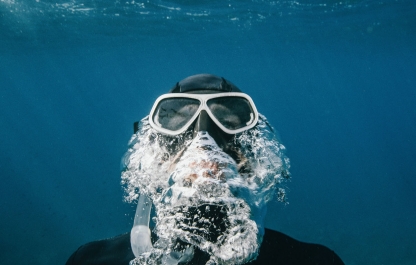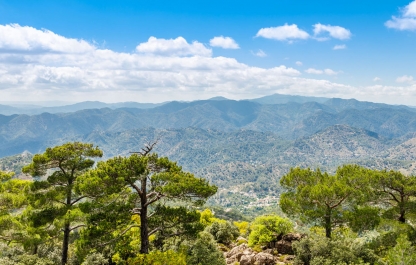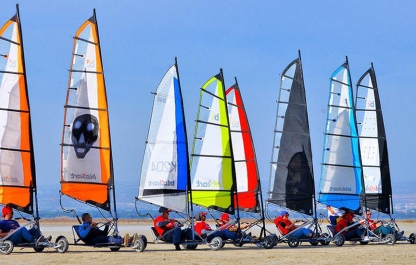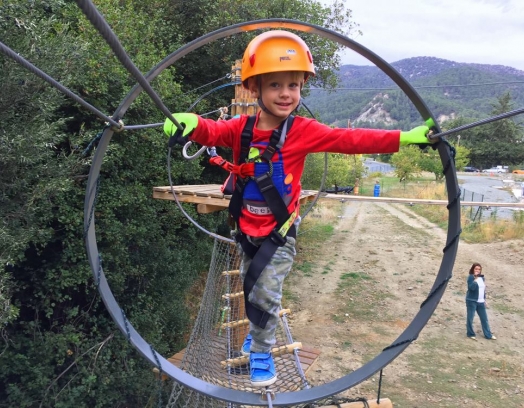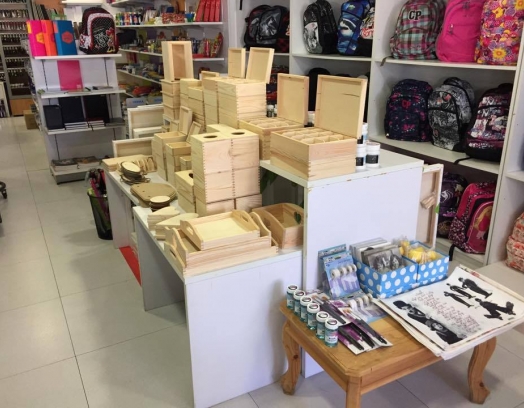Is scuba diving really worth trying? What secrets, challenges and risks does this sport involve? And why is diving in Cyprus so special? We spoke openly with diving instructor Andrei Melikhametov, who shared his thoughts and some behind-the-scenes truths.
Profile
Andrei Melikhametov, 24 years old. Certified Dive Master. Works at Buddy Divers Limassol.
— You’ve dived in different seas. How does Cyprus compare?
— Cyprus is definitely one of the world’s iconic diving destinations. Its crown jewel is the wreck of the Zenobia. There are very few sites like it anywhere: a massive ferry lying at an accessible depth, complete with the cargo it carried when it sank. No wonder divers from across the globe come here.
There are plenty of other fascinating spots too. Take MUSAN, the world’s first underwater sculpture park. The artworks themselves are impressive, but there’s also the fact that the site is right off the coast. That makes it perfect for families: the adventurous can dive with tanks, while others can snorkel on the surface and still enjoy the view.
Fish feeding has become a tradition here as well — the local fish are so used to divers that they’ll happily eat straight from your hand.
Then there are the artificial reefs, created by deliberately sinking ships. A good example is the Nemesis III, lying at 24 metres. It’s large, yet simple enough for beginners, and even used for training those who are ready to start exploring the inside of wrecks.
Sunken ships always attract far more marine life than areas of seagrass alone. Personally, I’m especially fond of lionfish and groupers — both are striking and fairly common along the Cypriot coast.
And don’t forget the sea caves near Ayia Napa. You can encounter squirrelfish, swallowfish, flutemouths… The real highlight of the Mediterranean here, though, is the visibility. Whether you’re a complete beginner or an experienced diver, Cyprus offers excellent conditions.
— What should a beginner keep in mind before their first dive?
— Honestly, there aren’t that many things to worry about — the instructor is trained to take care of most issues underwater. But there are three rules I’d highlight.
First: never dive if you have medical contraindications. Problems with the respiratory system are especially dangerous. Even a mild cold can make it impossible to equalise the pressure in your ears, and that’s both uncomfortable and risky.
Second: you mustn’t fly for at least 12 hours after a dive. Your blood is oversaturated with nitrogen, and a sudden change in pressure mid-air can cause serious problems.
Third: never ignore pain. Diving isn’t a survival test. Pain is always a signal that something’s wrong. For instance, if you can’t equalise and your ears hurt, let your instructor know — they’ll bring you a little higher and it will ease. Keeping silent can easily damage your eardrums.
— How much does a trial dive cost in Cyprus?
— It’s not cheap: on average €70–80. But that covers everything — equipment, instructor, and basic training. For comparison, in Egypt or Russia a first dive might cost around €25.
— What happens during the first lesson?
— First, there’s a briefing. Some centres show a short film, others explain things face-to-face — it doesn’t matter much. After that, you practise three essential skills.
Skill one — clearing your mask. You deliberately let a bit of water in, then learn to expel it. It’s simple, but for beginners it’s often the first real panic moment. Breathing through your mouth while your nose is underwater feels unnatural, even though there’s no real danger.
Skill two — clearing the regulator. That’s the device you breathe through. You take it out of your mouth, blow a few bubbles to show you’re exhaling, then replace it. The golden rule is always keep breathing — even if you don’t have the regulator in. Holding your breath is dangerous.
Skill three — retrieving the regulator. This time you throw it away and learn to recover it quickly and confidently. Of course, it stays attached to your tank, but you need the technique in case it slips out unexpectedly.
Once the basics are covered, it’s time for the actual dive. In Cyprus, instructors usually swim in front while beginners follow. The waters here are safe — no venomous fish or sharp corals — so this setup works well.
— How dangerous is diving, really?
— Back in the 1990s, diving was statistically safer than curling! Nowadays it ranks among the top three riskiest activities. The reason is simple: it became a commercial leisure industry. Demand is huge, and unfortunately the quality of training in some places dropped.
If you’re with a competent instructor and a reputable centre, there’s little to worry about. But if corners are cut, the risks rise quickly.
— How can someone tell if an instructor is reliable?
— First, check the dive centre’s reputation. A Google rating of 4.7 or higher with hundreds of reviews is reassuring. No reviews at all? That’s a bad sign.
Second, ask about certification. An Open Water Instructor is fully qualified to teach. A Dive Master is usually an experienced professional too, but may not always have the formal teaching licence. And be cautious: some centres hand out certificates after just a month and a half of training, which doesn’t guarantee real expertise. The older the certificate, the more experience the diver usually has.
— What if a student panics underwater?
— Panic doesn’t hit in an instant — it builds up. A good instructor will spot the signs early and calm things down. But if it does happen, the student stops thinking rationally. They grab at the instructor, pull off masks, block movement.
Every professional has their own ways of handling such situations. Sometimes they’re unconventional — but the goal is always the same: to get both diver and student back to the surface safely.
And one important note: surfacing isn’t always the end of the problem. Someone in panic may still be unable to stay afloat and could sink again. That’s why listening to the instructor is vital until you’re fully safe.
— After a first dive, can you immediately go deeper?
— No. After your trial dive you might get a certificate, but it’s really just a souvenir. Without further training you won’t be allowed beyond five metres.
— What does proper training involve?
— You need to take a certification course. The most popular is PADI. It costs around €300 plus €40 for the card, and lasts four days. On completion, you can dive independently to 18 metres.
To dive the legendary Zenobia, you’ll need the next level, since it lies deeper than 18 metres.
Altogether there are five courses. Completing them, along with at least 60 dives, qualifies you to become an instructor and dive to maximum recreational depths.
— Can someone just hire equipment and dive on their own?
— Absolutely not. All equipment has serial numbers, and the centre is responsible for its use. So hire always comes with an instructor.
— From what age can children dive?
— With an instructor, from 8 years old. But until 12, the maximum depth is limited to two metres.
— Finally, what would you like to say to our readers?
— The underwater world is extraordinary. Many who try it once can’t imagine life without it afterwards. Cyprus is a brilliant place to dive: a huge variety of sites, different levels of challenge, and fantastic visibility. Locals are lucky — your island is in the global top tier. My advice? Try it at least once. I wish you exciting adventures and unforgettable experiences!
Read also: “Diving in Cyprus”



